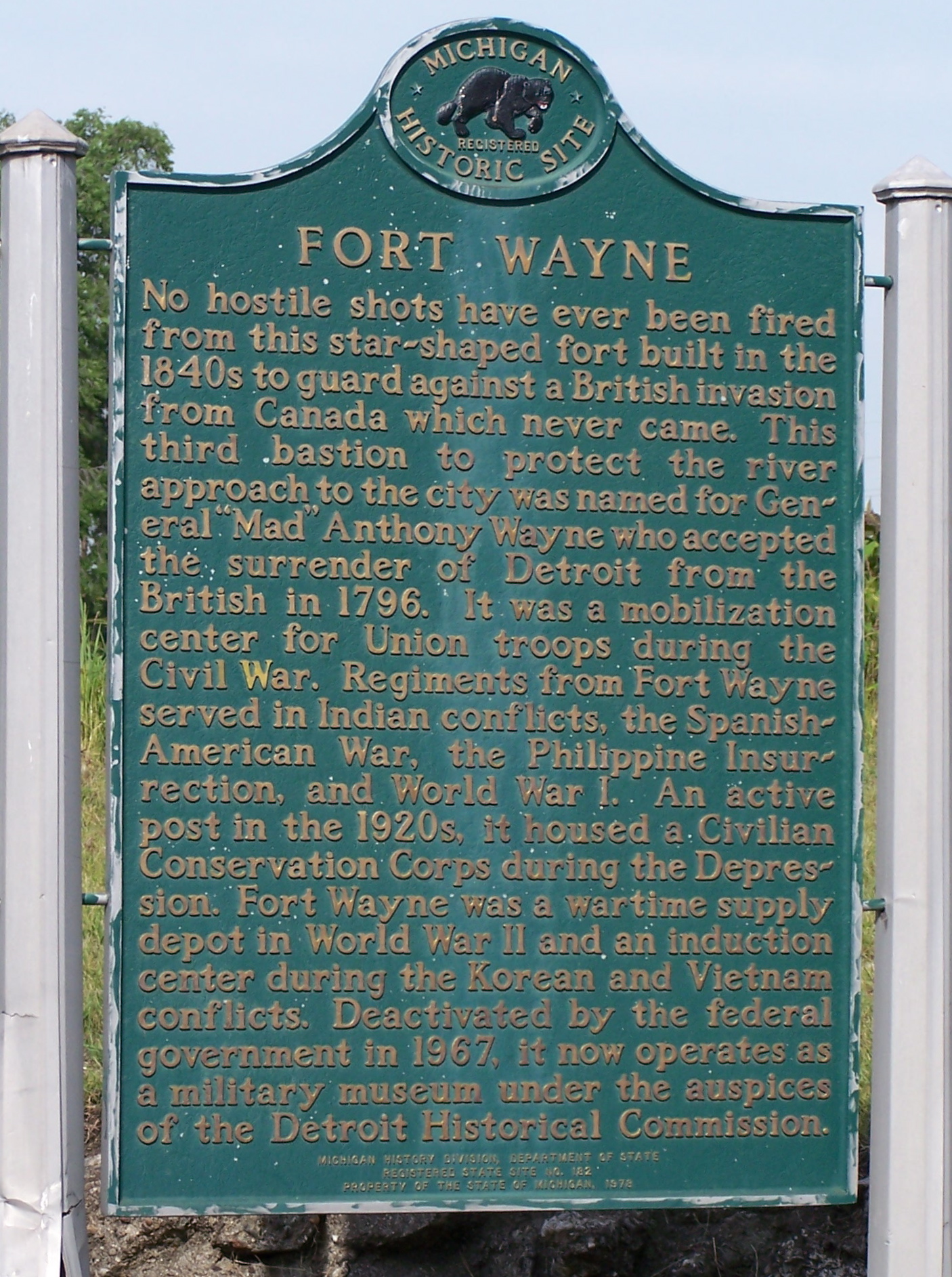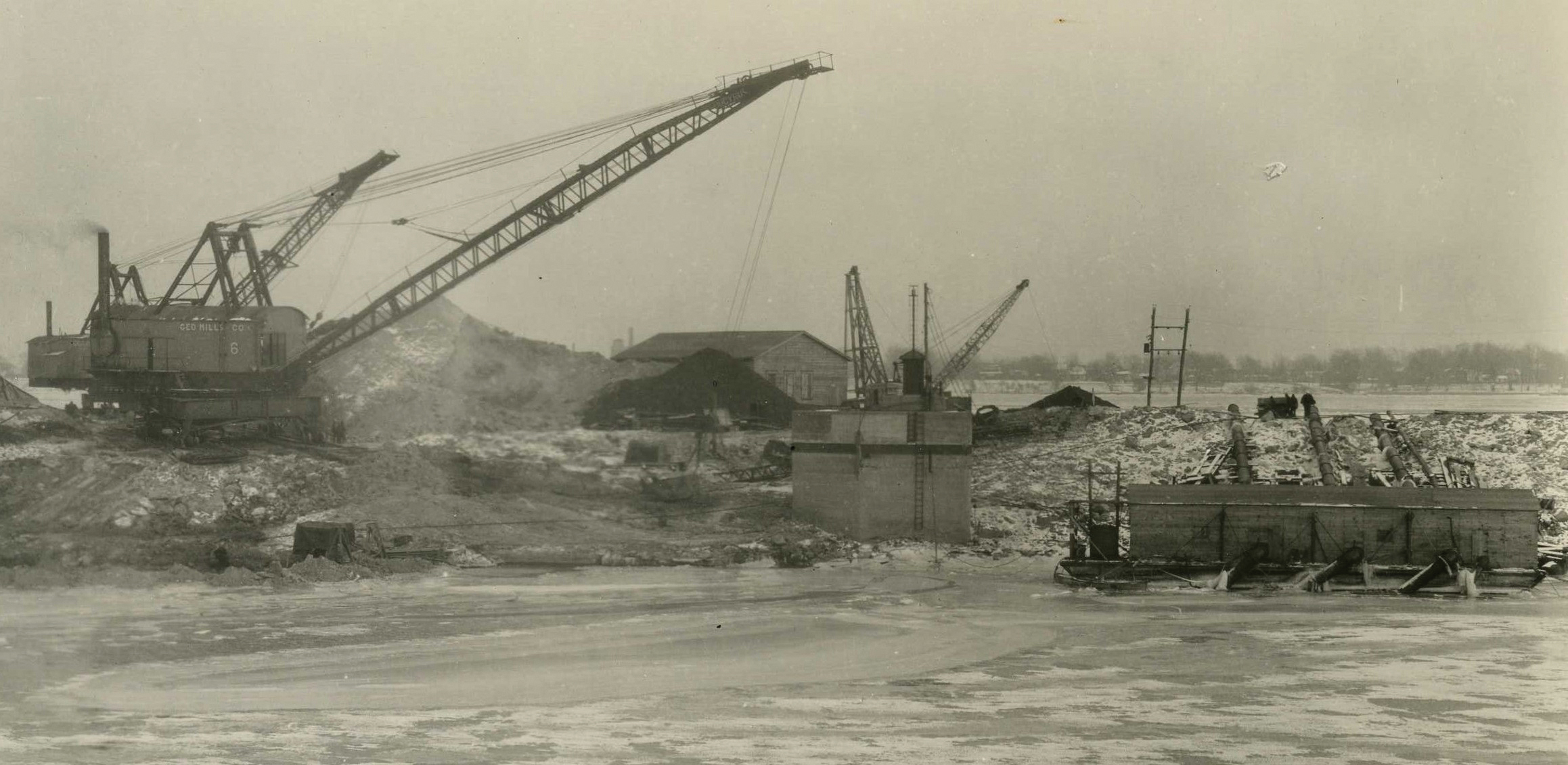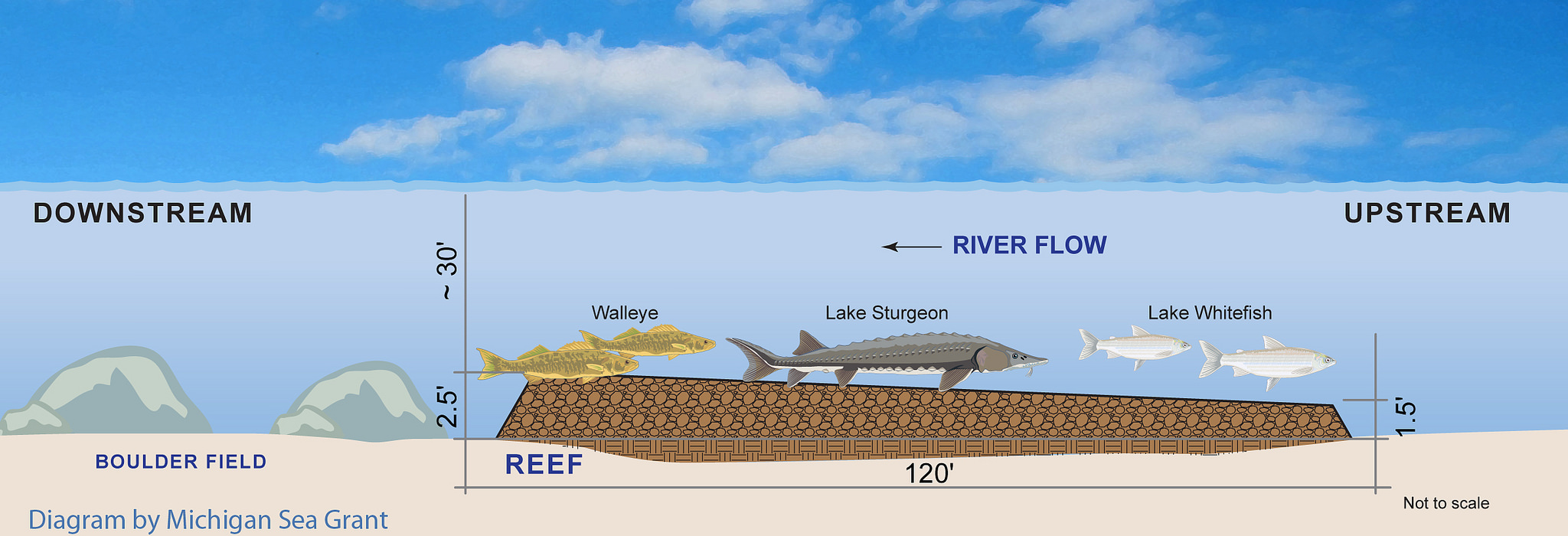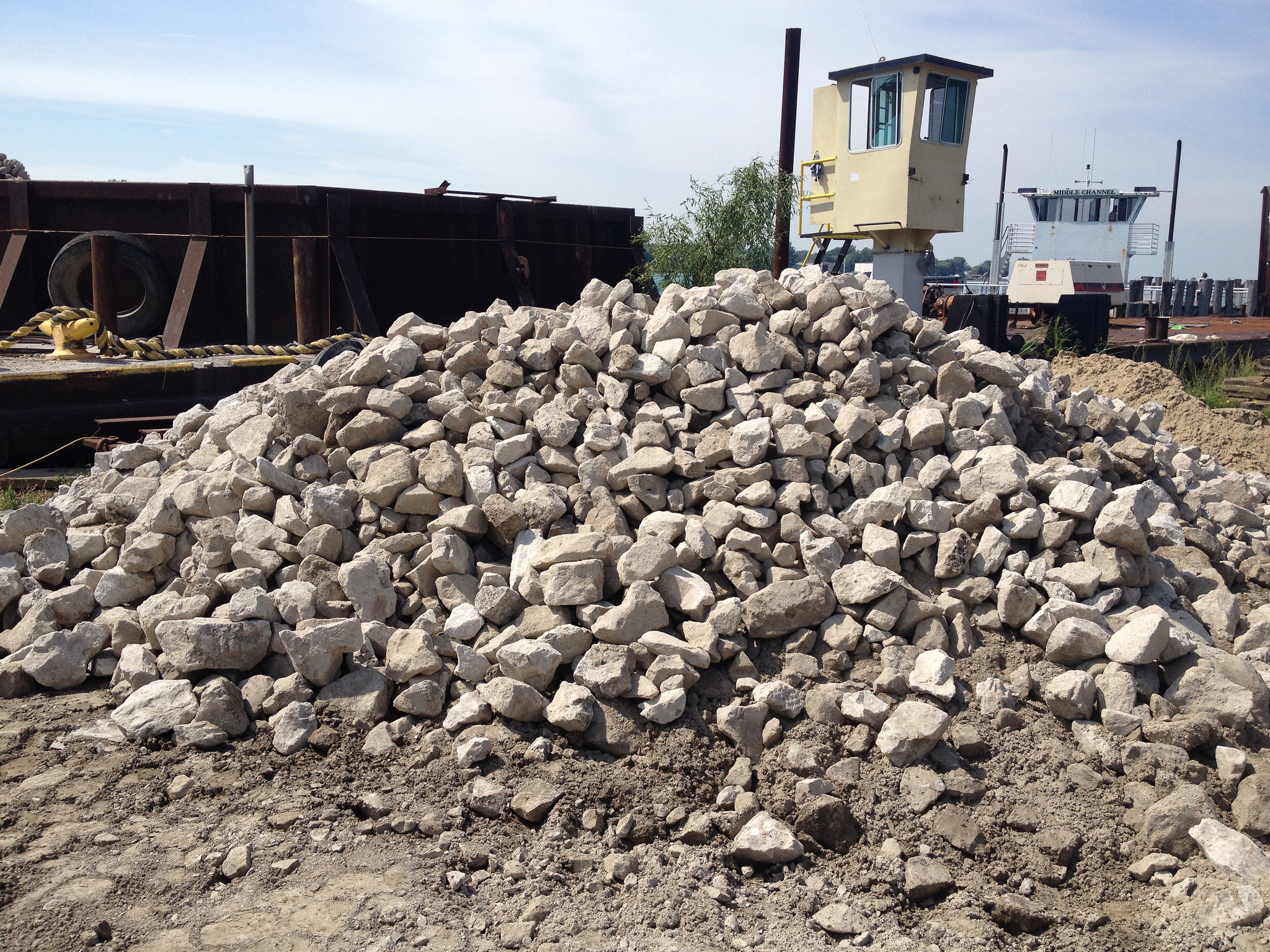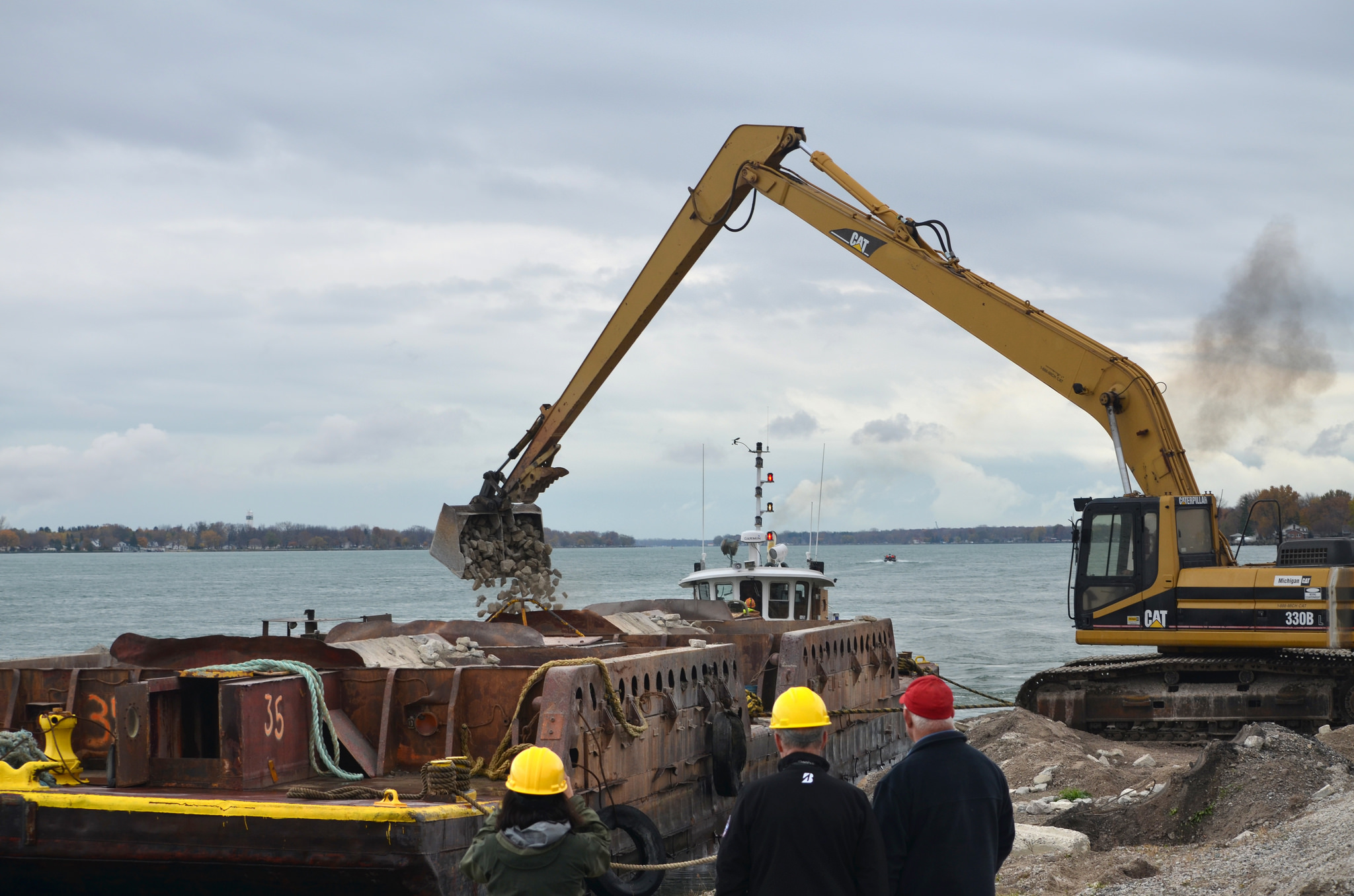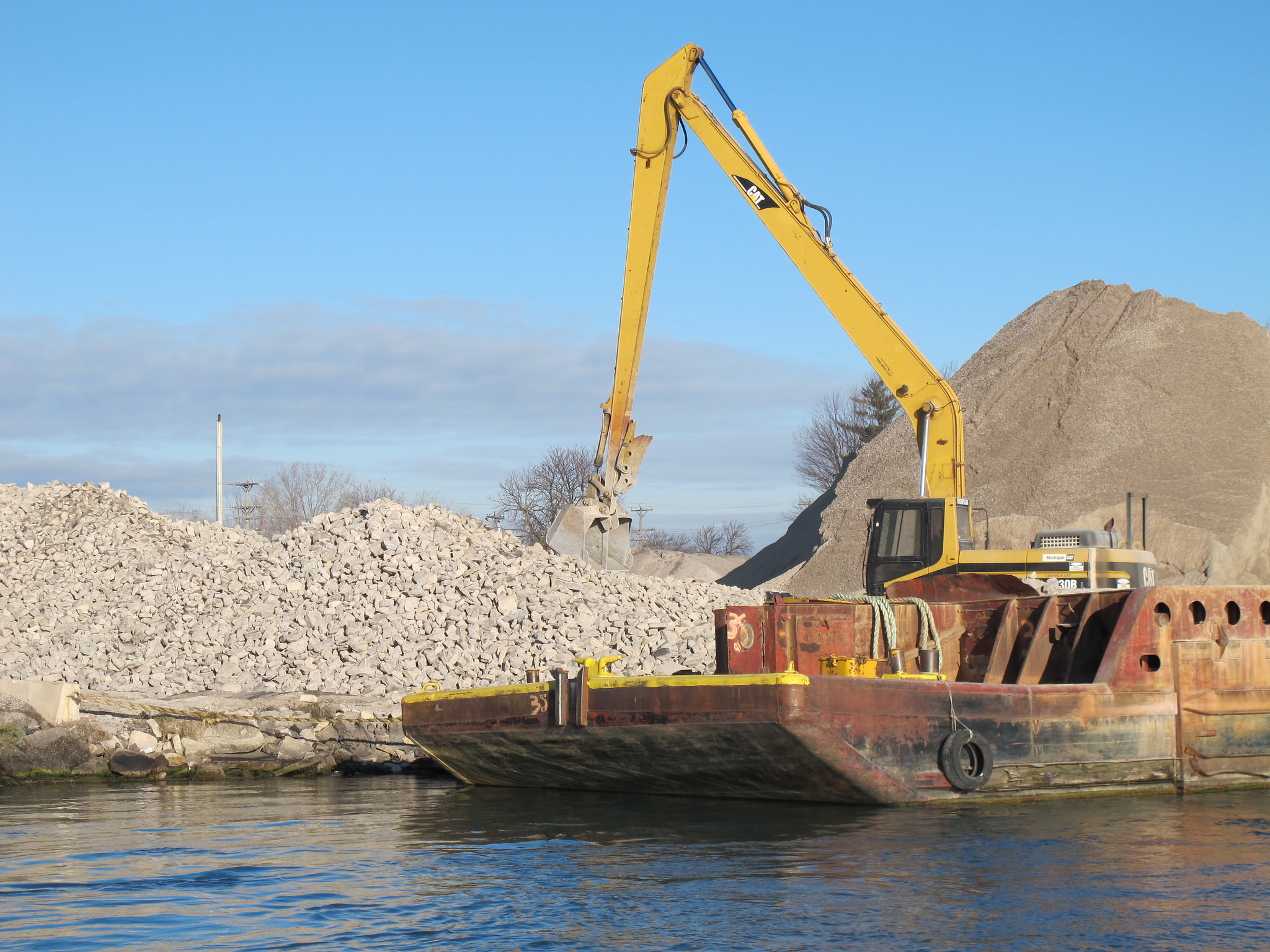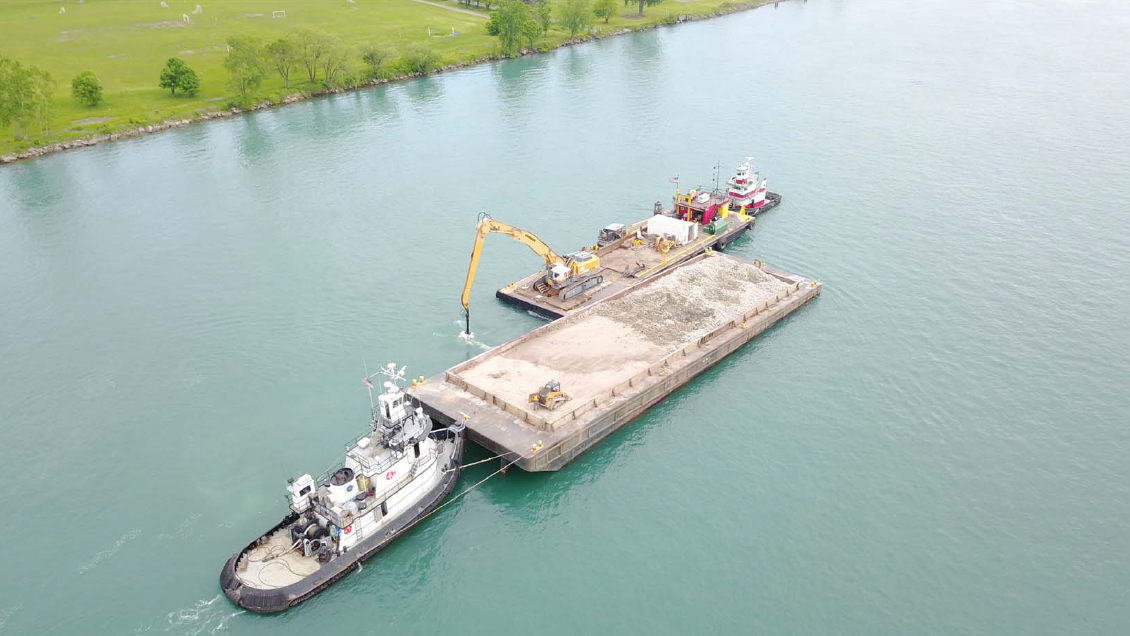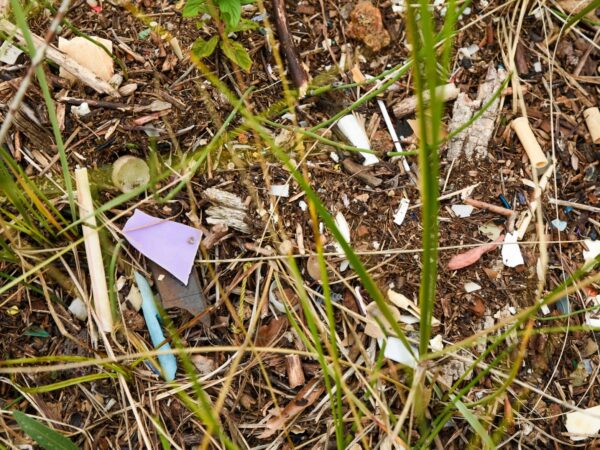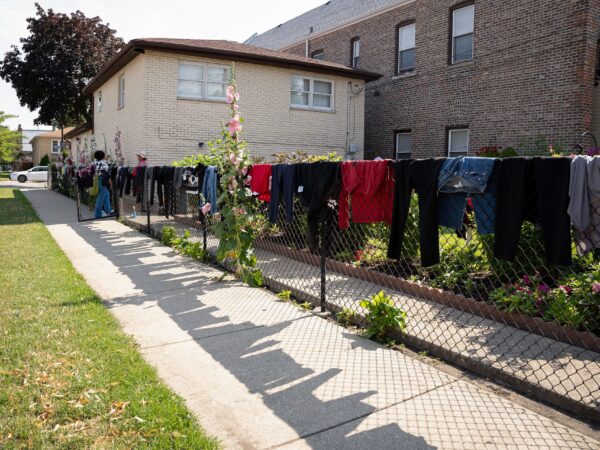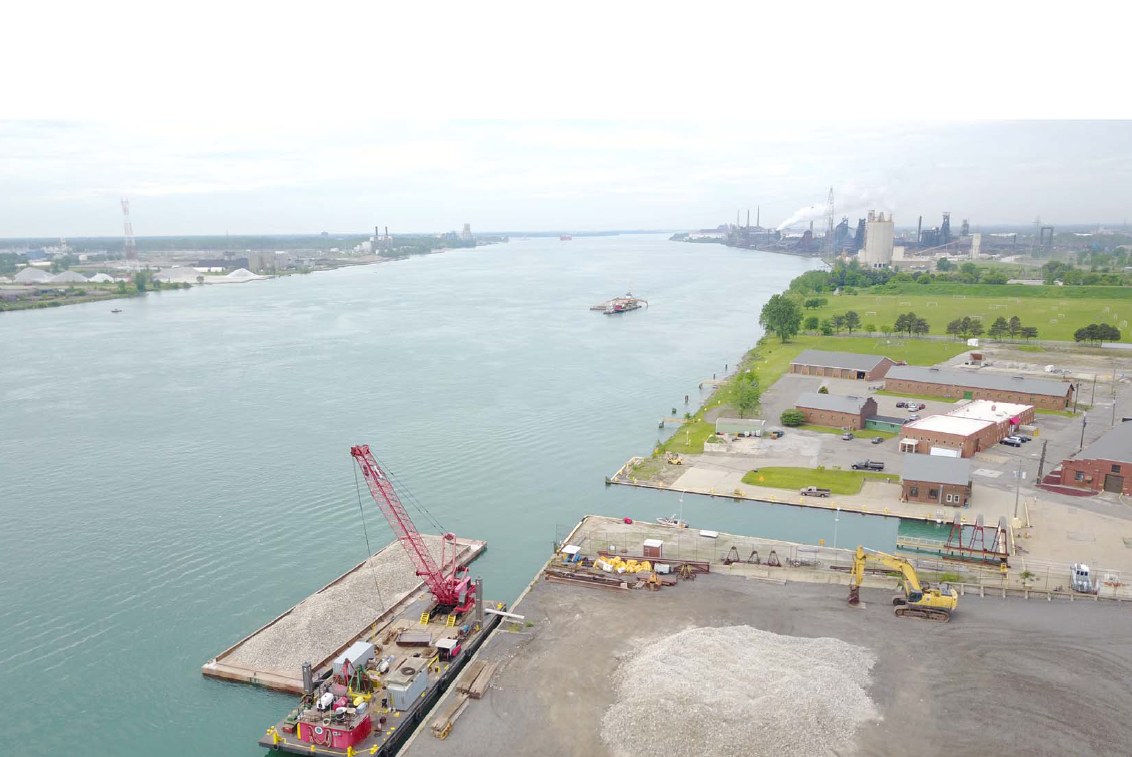
“If you build it, fish will come!” 9th Fish Spawning Reef Being Constructed in the Detroit River Near Fort Wayne
A new, four-acre, fish spawning reef is now under construction in the Detroit River about 250 feet off the shoreline of Historic Fort Wayne.
Contractors are placing nearly 20,000 tons of 4-8-inch limestone on the river bottom to support spawning of lake sturgeon and other fishes that require rocky habitat in which to lay their eggs. The reef will be approximately two feet thick and will be far enough below the surface to not affect boat and ship traffic. But why is this important?
For thousands of years, Native Americans revered lake sturgeon as a culturally-significant species and believed that the Spirit named “Oki” lived in them. Early immigrant fishermen, prior to the 1850s, considered lake sturgeon a “trash fish” and slaughtered them because they destroyed fishing nets that targeted other species. During this same time period, there were also reports that lake sturgeon was stacked like firewood and left to dry on the banks of the Detroit River in Amherstburg, Ontario – the mummified bodies of this oily fish were burned to heat the boilers of wood-burning steamboats on the Detroit River. Then during the mid-1860s, the economic value of lake sturgeon was discovered when their eggs became sought after as caviar and their smoked flesh became craved as a delicacy.
The Detroit River was once one of the best lake sturgeon fisheries in the United States
During the late-1800s, the Detroit River was recognized as one of the best lake sturgeon fisheries in the United States and commercial fishermen harvested tons annually, eventually leading to over-fishing this species. Then during the late-1800s and early-1900s the Livingstone and Amherstburg shipping channels were constructed to support commerce.
Literally, millions of tons of limestone bedrock, cobble, and gravel were removed from the lower Detroit River to create these shipping channels. However, these natural rock and gravel substrates were the spawning habitat for lithophilic or “rock-loving” fishes like lake sturgeon, lake whitefish, walleye, and others. Adding insult to injury, 97% of the coastal wetlands were lost to human development along the shoreline. These wetlands were the nursery habitat essential for the survival of these fishes.
The lake sturgeon population was nearly extirpated by the middle of the 20th century in Michigan and estimated today to be about one percent of its former abundance. As a result, the lake sturgeon is designated a “species of special concern” by the U.S. Fish and Wildlife Service, a threatened species in North America by the American Fisheries Society, a globally rare species by The Nature Conservancy, and a threatened species in the State of Michigan and Province of Ontario.
From the 1970s to 1999, no lake sturgeon spawning was reported in the Detroit River, which was one of the most productive sturgeon spawning grounds in the United States. Both Michigan and Ontario have closed the entire Detroit River to possession of lake sturgeon, to conserve this species and further its recovery. Then in 2001, lake sturgeon spawning was documented on a coal cinder pile near Zug Island in the Detroit River for the first time in decades. Fishery biologists and managers hypothesized that in the 2000’s, lake sturgeon reproduction was now more limited by habitat than environmental quality. The theory put forward was that if lake sturgeon spawning habitat could be restored in the right areas, with the proper conditions, and in close proximity to critical nursery areas, the population would grow and hopefully recover.
In response, nine fish spawning reefs have been constructed in the Detroit River: McKee Park in Windsor, Ontario (2003); Belle Isle in Detroit, Michigan (2004 and 2016); Fort Malden in Amherstburg, Ontario (2004); Fighting Island in LaSalle, Ontario (2008 and 2013); BASF property along the Trenton Channel in Riverview, Michigan (2008); Grassy Island in Wyandotte, Michigan (2015); and Fort Wayne in Detroit, Michigan (2018).
All reefs improved fish spawning, however, only Fighting Island reefs (2008 and 2013), Grassy Island reef (2015), and the Belle Isle reef constructed in 2016 were successful for lake sturgeon reproduction. Post-project monitoring of the Belle Isle reef constructed in 2004 found 16 species of native fish spawning at the site, including lake whitefish, but no lake sturgeon. The first monitoring of the Fort Wayne reef will be the spring of 2019.
Several take-home messages stand out in these reef projects.
“No one agency or organization can do this alone”
First, the successful reproduction of lake sturgeon and other fishes in the Detroit River after a 30-year absence could not have happened without the over four decades of water pollution prevention and control programs in the Detroit/Windsor metropolitan areas. Secondly, these fish spawning reef projects are excellent examples of strengthening the science-management linkage and achieving compelling ecosystem results. Thirdly, fishery biologists were the primary champions for the reefs, ensuring that they were treated as experiments that included post-project assessment of effectiveness. Fourthly, these nine reefs could not have happened without significant contributions of many partners – the key lesson being no one agency or organization can do this alone. And finally, if the Detroit River is cleaner for lake sturgeon and other fishes, it is cleaner for you and I because we live in the same ecosystem.
Featured Image: Aerial view of barge construction, Photo by Great Lakes Dock & Material via Michigan Sea Grant
5 Comments
-
Great article thank you. The sturgeon will be reintroduced to the Maumee River this year via a trailer at the Toledo Zoo
.-
I heard. Hoping for success.
-
-
Nice plug for our work John!
-
Thanks for all you and your team does!
-
It works very well for me


